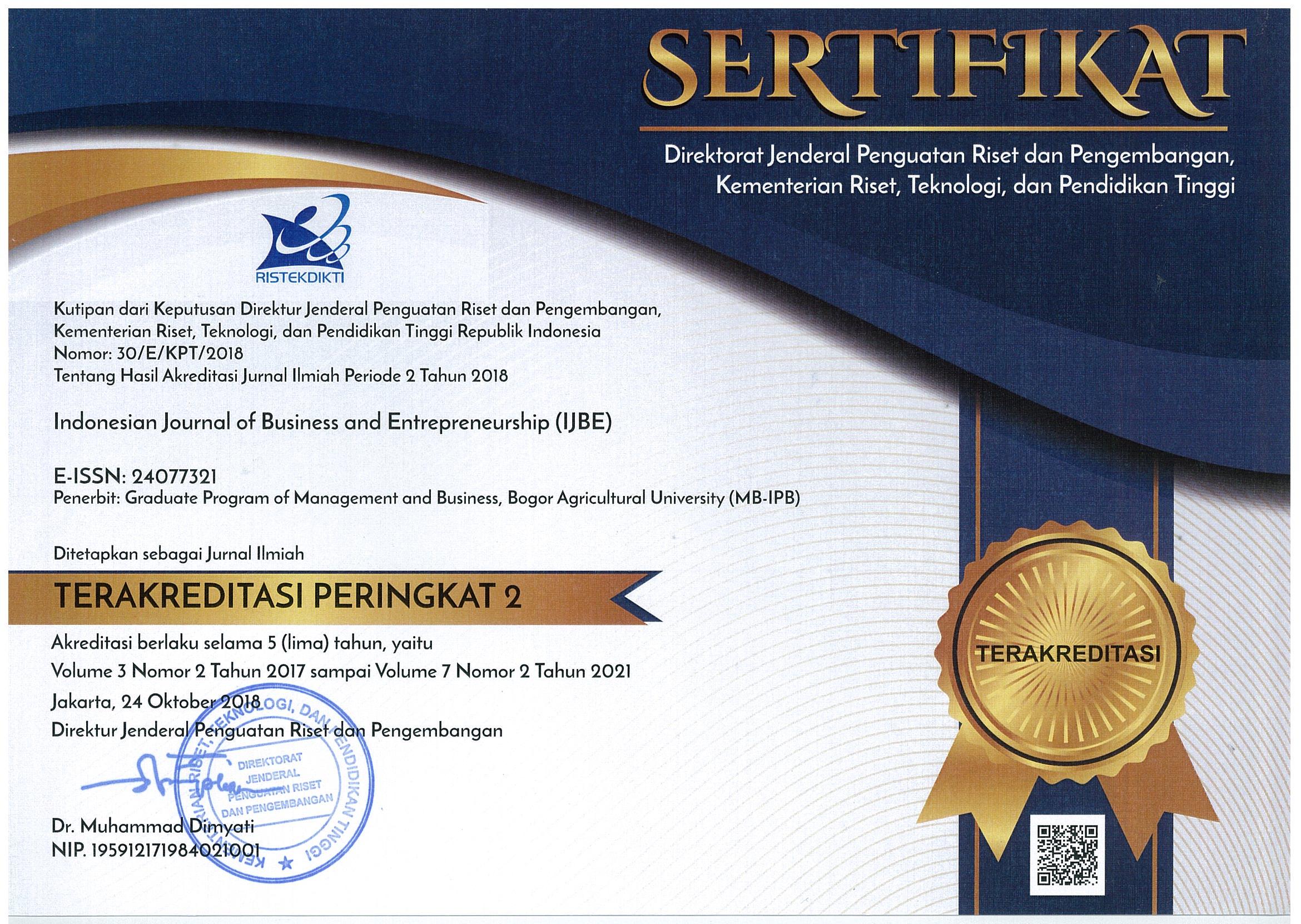CLUSTER OF INDONESIA KABUPATEN-KOTA POTENTIAL IN DEVELOPING FOOD CROP AND HORTICULTURE COMMODITIES
Abstract
Identification of potential areas in an agricultural sector is needed in order to meet the national food needs, among others, by carrying out mapping the potential areas through clustering the Kabupaten-Kota in Indonesia, especially on imported agricultural commodities of food crops and horticultures. The use of cluster analysis with top-down clustering method (K-means) produces the best cluster. Of 268 regencies-cities, there are 7 clusters, namely Cluster 1 consisting of 154 regencies, Cluster 2 consisting of 2 regencies, Cluster 3 consisting of only1 regency, Cluster 4 consisting of 8 regencies, Cluster 5 consisting of 24 regencies, Cluster 6 consisting of 75 regencies, and Cluster 7 consisting of 4 regencies. Each cluster has its own dominant commodity characteristics. The results of typology klassen on constructed clusters show that food crop and horticulture commodities have grown well and fast. Out of 13 commodities, there are 7 major commodities: Cluster 1: rice and corns; Clusters 2, 3 and 7: cassava; Cluster 4: corns, cassavas and chilly; Cluster 5: apples; Cluster 6: corns, shallots, and garlic. Six other commodities do not grow well, namely sorghum, potatoes, soybeans, peanuts, oranges, and grapes. The potential lack of an area is due to the plants’ low productivity, which is mainly because of plant pests, highly operational cost, climates and natural disasters.Keywords: imports, food crops, horticulture, cluster, and leading sector.
Downloads
References
Badan Pusat Statistik. 2014. Statistik Indonesia 2014. Jakarta: Badan Pusat Statistik.
Bunkers WJ, Miller JR, DeGaetano AT. 1996. Definition of climate regions in the northern plains using an objective cluster modification technique. Journal of Climate 9(1):130–146.
Direktorat Jenderal Pengolahan dan Pemasaran Hasil Pertanian Kementerian Pertanian. 2014. Statistik Ekspor Impor Komoditas Pertanian 2001–2013. Jakarta: Direktorat Jenderal Pengolahan dan Pemasaran Hasil Pertanian Kementerian Pertanian.
Vincent G. 1992. Teknik Analisis Dalam Penelitian Percobaan.Edisi 2. Bandung: Torasito.
Hair J, Anderson R.E, Tatham R.L, Black W.C. 2006. Multivariate Data Analysis, Sixth Edition. UK: Prentice Hall International.
Johnson R.A, Wichern D.W. 2007. Applied Multivariate Statistical Analysis, sixth edition. USA:Pearson Education Inc.
Prishardoyo. 2008. Analisis tingkat pertumbuhan ekonomi dan potensi ekonomi terhadap produk domestik regional bruto Kabupaten Pati. Journal of Economic and Policy 1(1):1–9.
Riyadi. 2007. Analisis faktpr-faktor yang memengaruhi produksi jagung di Kecamatan Wirosari, Kabupaten Grobogan [tesis]. Semarang: Universitas Diponegoro.
Sjafrizal. 2008. Ekonomi Regional, Teori dan Aplikasi. Padang: Boduose Media.
Tsurayya S, Kartika L. 2015. Kelembagaan dan strategi peningkatan daya saing komoditas cabe Kabupaten Garut. Jurnal Manajemen dan Agribisnis 12(1): 1–13.
Utkarsha P, Narkedhe, Adhiya. 2014. Eavaluation of modified k-menas clustering algorithm in crop prediction. International Journal of Advanced Computer Research 4(3): 799–807.
Wicaksono. 2011. Analisis location quotient sektor dan subsektor pertanian pada kecamatan di Kabupaten Purworejo. Mediagro 7(2):11–18.








